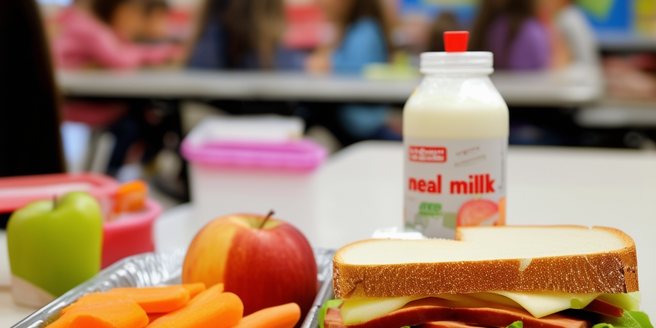History and Evolution of Free Lunch Programs
Free lunch programs began in the early 20th century as a response to the hunger faced by low-income students. The National School Lunch Act of 1946 marked a significant milestone, providing federal support for free and reduced-price lunches in schools across the United States. This initiative evolved through various reforms, including the introduction of nutritional standards and eligibility criteria changes. Over the decades, the program expanded, reflecting greater societal understanding of the importance of child nutrition for academic performance and overall well-being. In addition to healthy meals, these programs often provided crucial nutrition education. By the 21st century, free lunch programs became more comprehensive, aiming to tackle child hunger and improve public health outcomes nationwide.
Eligibility Criteria for Free Lunch Programs
Eligibility criteria for free lunch programs vary but generally target low-income families. In the United States, eligibility is primarily determined by household income, aligning with federal poverty guidelines. Families earning at or below 130% of the federal poverty level qualify for free lunches, while those earning between 130% and 185% are eligible for reduced-price lunches. Schools often use applications, direct certification through participation in other assistance programs, and community eligibility provisions to identify eligible students. These various methods help streamline the qualification process and ensure no child is left behind. The goal is to ensure that children who need nutritional support most can access it without stigma or bureaucratic hurdles, thereby promoting equity and academic success.
Impact of Free Lunch Programs on Student Nutrition
Free lunch programs have significantly improved student nutrition, especially for low-income children who may otherwise lack access to balanced meals. Studies have shown that participation in these programs leads to higher intakes of essential nutrients, including fruits, vegetables, and whole grains. This positive impact can be particularly profound in communities with high rates of food insecurity. Improved nutrition is linked to better cognitive function, higher academic performance, and overall health. Additionally, free lunch programs can reduce the stigma associated with receiving meals at school. Furthermore, these programs help reduce food insecurity, ensuring that children receive consistent, nutritious meals even outside of school hours. By addressing nutritional deficits, free lunch programs play a critical role in fostering a healthier, more equitable educational environment.
Challenges Faced by Free Lunch Programs
Free lunch programs face multiple challenges, including funding constraints, administrative complexity, and stigma associated with receiving free meals. Budget limitations can affect food quality and variety, compromising nutritional value. These programs are essential for many students and offer a lifeline for families in need. Often, it’s the only nutritious meal that some students receive all day. The application process for eligibility can be cumbersome, deterring some families from participating. Additionally, children who receive free or reduced-price lunches may experience social stigma, affecting their willingness to take advantage of these programs. Addressing these challenges requires policy reforms, increased funding, and efforts to normalize free meals as a standard part of school life, ensuring that all students benefit without shame or hindrance.
Future Prospects of Free Lunch Initiatives
The future of free lunch initiatives looks promising but requires ongoing commitment and innovation. Policymakers are exploring universal free lunch programs to eliminate the stigma and administrative hurdles associated with income-based eligibility. Advances in nutrition science offer opportunities to continually improve meal quality and appeal. Integrating local and sustainable food sources can enhance nutritional value and support community economies. Not only do these initiatives improve health outcomes for students, but they also foster a greater sense of community responsibility. Additionally, leveraging technology for program administration can streamline processes and increase participation. Continued advocacy and funding are crucial to ensuring that free lunch programs evolve to meet the needs of all students, promoting health and educational equity on a broader scale.



